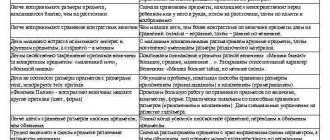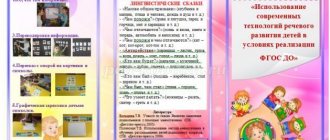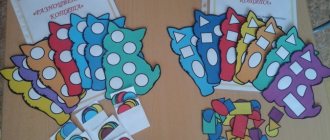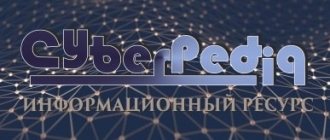New methods and technologies of music education in the context of the implementation of the Federal State Educational Standard in preschool educationconsultation
Music and children's musical activity are a means and condition for a child's entry into the world of social relations. The range of tasks of musical education and child development in preschool childhood in the conditions of the Federal State Educational Standard of Preschool Education has expanded. Currently, teaching staff of preschool educational institutions are intensively introducing innovative technologies into their work. Therefore, the main task of preschool teachers is to choose methods and forms of organizing work with children, innovative pedagogical technologies that optimally correspond to the goal of personal development. Learning technology means a certain method of learning, in which the main burden of implementing the learning function is performed by a learning tool under human control. The main goal of the music director is to form the foundations of spiritual and moral education through familiarization with musical culture using new technologies, as the most important component of the harmonious development of the individual. This goal is realized in tasks that meet the child’s urgent needs:
- creating conditions that provide opportunities for each child to demonstrate their individual abilities when communicating with music;
- creative development of the child’s natural musicality;
- releasing primary creativity, creating conditions for spontaneous creative manifestations;
- assistance in the formation of the inner world and self-knowledge (emotional and mental development and psychocorrection).
The main principles that specialists must adhere to:
- Attention to each child: taking into account his age, speech, individual musical characteristics and needs.
- The musical director is an equal partner. He knows how to play interestingly, organizes games, invents them.
- Freedom and independence in children’s choice of knowledge, skills and abilities.
- Freedom does not mean permissiveness, it is the subordination of one’s actions to general rules.
- Focus on individual discovery. Children should be made partners in a game or idea.
What innovative technologies are appropriate to use specifically in musical activities?
- Health-saving technologies.
Forms of work for music. classes are: musical and valeological aspect (performing songs, chants about a healthy lifestyle), breathing and articulation gymnastics, finger games, music therapy, physical education, rhythmoplasty, etc.
- Gaming technologies.
The main forms are musical and musical-didactic games.
- Technology "Synthesis of Arts".
It is aimed mainly at the perception of music through the involvement of other types of arts (fine arts, theater, literature, choreography).
- Project activities.
Allows you to solve a complex of problems subordinated to one topic, using a variety of techniques and methods, gradually and in a system.
- Information and communication technologies. Modern education cannot be imagined without the use of information resources. This is due not only to the development of technology and technology, but also, first of all, to the changes caused by the development of the information society, in which information and the ability to work with it become the main value. Therefore, the use of ICT in working with children lies in the fact that teachers use the multimedia capabilities of the computer in their work to increase motivation for learning and facilitate children’s assimilation of material of various types. The use of information and communication technologies in the process of musical development of preschool children can significantly diversify children's musical activities. In addition, multimedia tools are interactive in nature, i.e. the viewer and listener of multimedia products does not remain passive, but is an active participant and creator of the process. Unlike conventional technical means of education, information and communication technologies make it possible not only to saturate a child with a large amount of ready-made, strictly selected, appropriately organized knowledge, but also to develop intellectual and creative abilities in preschool childhood - which is very important. The use of computer technologies in music education helps to increase interest in learning, its effectiveness, and develops the child comprehensively. For a teacher, Internet resources significantly expand the information base in preparation for classes, related not only to the world of music, but also to the world of art in general. And the ability to use a computer allows you to develop modern teaching materials and use them effectively. Multimedia technologies should be used taking into account the peculiarities of children’s perception and under certain conditions in connection with this. A fundamental role in the use of multimedia support is played by technical equipment and specialized multimedia tools, the main purpose of which is to increase the effectiveness of learning. Such modern means include a computer (laptop), sound amplification devices (speakers), a device that projects an image (projector) and an interactive multimedia board, or a screen serving as a computer monitor. Now let’s find out what SanPiNs recommend on this issue: - Direct educational activities using ICT should be carried out no more than once during the day and no more than three times a week on days of highest performance: Tuesday, Wednesday and Thursday.
— After work, you should do eye exercises.
— The continuous duration of work in the form of educational games using ICT for children 4–5 years old should not exceed 5 minutes, for children 5 years old – 10 minutes and for children 6–7 years old – 15 minutes.
— For children with chronic diseases and frequently ill children, the duration of direct educational activities using ICT should be reduced by half.
— To reduce children’s fatigue in the process of carrying out direct educational activities using ICT, it is necessary to ensure a hygienic and rational organization of the workplace: furniture that matches the child’s height, a sufficient level of illumination.
— The distance of the first row spectators from the projector screen should not be closer than 1.8 m.
— Observation should be organized in such a way that all children can clearly see the object being demonstrated. Now we will consider the conditions for selecting and compiling multimedia accompaniment (presentations, films).
— When selecting materials, it is very important to use the highest quality ones, which, if possible, maximally express the original color, shape, and sound. There should be nothing superfluous in the graphics, colors should be clear, and objects should be perfectly recognizable. The sound must be of exceptional recording quality - without noise or falsehood.
— Animation attracts the child’s attention with its brightness and imitation of liveliness, but you should not abuse the special mobility of objects. The speed of their movement and the actions they carry out should not be extremely fast, but it should not be irritatingly slow either.
— The presentation must contain at least 10, but should not exceed 25 slides. The computer does not provide the living energy that preschool children need. Information technologies do not have the emotional component at which children at this stage become acquainted with the world. Therefore, the leading role of the teacher is a very important condition, and multimedia accompaniment is only a didactic tool. Thus, for the successful use of multimedia support, it is important to fulfill all the conditions for its use: didactic and technical. The content must be carefully thought out, taking into account age characteristics, and the technical component must be of high quality.
- The basis of innovative technologies for musical education of children is collective activity, combining: singing, rhythmic speech, playing children's musical instruments, dancing, improvised movement to music, voicing poems and fairy tales, pantomime, improvised theatrical performance.
Innovative forms of musicality development that are used in practice are:
- Communicative dances
Involving a child in the process of playing music lies through creating an atmosphere of acceptance of each other and emotional and mental emancipation. Here, communicative dances are indispensable assistants, the use of which solves the following problems:
developing communication skills, working on a sense of form,
development of motor coordination, development of a sense of rhythm.
- Coordination and movement games (musical and speech)
Such games on a large scale (through the whole body) give a sense of musical dynamics, tempo, performance touch, speech and plastic intonation, which is their musical content.
These games are permeated with the idea of coordination, which acts in them as a motor “accompaniment”, stimulates the development of dexterity, accuracy, reaction, and fosters ensemble coherence.
- Finger games (musical and speech)
The value of finger games in the context of the development of children's musicality lies in the fact that they represent the first experiences of performing artistry, in which the character of the performance is actually intoned, enriched with rhythmic and sound modulations of spoken language.
- "Chorus of Hands"
This form is interesting in that it leads children to an understanding of motor two-voices, in which all participants are divided into a “chorus of two voices” and two leaders—“conductors.” This form is aimed at developing coordination freedom of movement, a sense of rhythm, attention, ensemble coherence, and the ability for motor improvisation.
- Rhythmic recitation to music
Rhythmic declamation is a synthesis of music and poetry. It can be defined as a musical pedagogical model in which the text is not sung, but rhythmically recited.
- Games with sounds
When working with games with sounds, the following areas are conventionally distinguished:
- sounding gestures and music of my body;
— noise instruments (traditional and homemade) and music born from noise.
- Elementary music playing
In musical activities with children, I consider it necessary to use children's musical instruments, primarily noise instruments, since these instruments are simple and most accessible to children of this age. But this form of work on the development of musicality is not limited to the use of traditional noise instruments. In modern musical methodology, it is the study of sound and children’s knowledge of the world through sound, the creation of a different image of a wide variety of everyday objects that are increasingly being developed. They are the members of an amazing orchestra!
Communication between children and primary instruments develops: musicality, timbre hearing, subtlety of perception, associativity, and artistry.
Our students get to know themselves and the world around them in the process of playful, joyful and natural communication with music, without unnecessary “training” and tedious memorization; educational tasks are carried out along the way, the predominant tasks are education and development, as provided for by the Federal State Educational Standards program in preschool educational institutions.
Literature:
- Burenina A.I. Rhythmic mosaic is a rhythmic plasticity program for children. St. Petersburg, 2000.
- Kartushina M.Yu. Fun for kids - theatrical entertainment. M., 2008.
- Kostina E.P. Tuning fork is a music education program for children of early and preschool age. M., 2008
- Musical Director - illustrated methodological magazine. M., 2004.
Modern technologies for conducting music classes in preschool educational institutions
Elena Sorokina
Modern technologies for conducting music classes in preschool educational institutions
" Modern technologies for conducting music classes for preschool children."
musical director Sorokina E. A.
Technology is a clear sequence of specific steps that always leads to a previously known result. technology everywhere; it is part of our daily life . New approaches to music education required the use of effective modern technologies in the development of children’s musicality , focusing the attention of music directors of preschool education on the development of children’s creative and intellectual abilities, correction of the emotional-volitional and motor spheres and aimed at enhancing the child’s cognitive development using a wide range of ICT technologies . Musical lessons become more meaningful, harmonious and productive
Music is a source of special children's joy. To solve the main problem of developing the musical education of preschoolers, I use new technologies in various types of musical activities .
The use of ICT in a preschool institution can significantly revitalize joint educational activities with children. Modern technologies expand the possibilities for presenting musical and didactic material provided for in the educational program of a preschool institution. Having at the same time the additional opportunity to transmit visual information to children.
Musical lessons become more meaningful, harmonious and productive; children are more active in joint discussion of a piece of music .
Carrying out tasks through several types of musical activities : listening to music , singing, musical-rhythmic movements , musical-didactic games , playing children's musical instruments , activate children's attention, as new motives for mastering the proposed material appear.
“Listening to
music ” Technology for developing the perception of music according to the author’s program “ Musical Masterpieces ” by O. P. Radynova is identifying effective ways to introduce children to the art of music , solving issues important for the spiritual development of a person: how to captivate a child with music , teach him to listen, understand, empathize, feel its beauty, form the need to express your impressions in creativity. The author has created a scientifically grounded and methodically structured system for forming the foundations of the musical culture of preschool children, including principles, content, methods and forms of work, taking into account the individual and psychophysiological characteristics of children. Emotionally - expressive explanations of the nature of music , comparisons, metaphors, word-images characterizing changes in mood, poetry, fairy-tale plot form of classes . Using computer presentations on musical fairy tales allows you to enrich the process of emotional and figurative cognition, evokes a desire to listen to music and helps to remember it for a long time.
Presentations are indispensable when introducing children to the works of composers; bright portraits and photographs attract children’s attention, develop cognitive activity and impressions. I studied and analyzed the following methodological literature:
"Childhood with music "
A. G. Gogoberidze, V. A. Derkunskaya
Educational field " Music "
A. G. Gogoberidze, V. A. Derkunskaya
"Song, Dance, March"
O. P. Radynova
"Moods, feelings in music "
O. P. Radynova
"Fairy tale in music . Musical instruments » O. P. Radynova
"Nature and Music "
O. P. Radynova
"Folk lullabies"
O. P. Radynova
" Musical masterpieces . Author's program. Methodological recommendations" by O. P. Radynova
"Singing"
-The development
of musical abilities is closely related to creative activity and is one of the most important tools for achieving the task. Technologies for teaching singing skills by G. A. Struve An original, effective method - “choral solfeggio”, famous musician , teacher, composer, People's Artist of Russia G. A. Struve, is widely known in our country and abroad, built on visual musical exercises , in the form of an entertaining game. Choral solfeggio exercises combine three important components: visual, auditory, and motor. Classes using this method contribute to the active development of musical ear , sense of rhythm, musical memory , harmonic hearing, coordination, and creative abilities of the child. help the teacher in solving the problems of teaching singing skills: emotional responsiveness and perception of musical compositions , modal sense and correct intonation, as well as a sense of rhythm. By gradually mastering the art of singing, the child improves his skills in all types of musical abilities .
The process of dramatizing songs can be presented as part of the training of musical abilities , and as a separate vocal science. Singing forms the articulation of various sounds, improves the mobility and accuracy of movements of the tongue and lips, increases the volume of auditory memory and attention to memorizing the lyrics of songs, and develops a sense of rhythm. To develop a singing voice, breathing exercises should be used. Human health, physical and mental activity largely depend on breathing. Proper breathing is the basis of the life of the body. The respiratory function is extremely important for the normal functioning of a child’s body, especially, since the increased metabolism of a growing organism is associated with increased gas exchange. The respiratory system of a preschool child has not reached full development; children’s breathing is shallow and rapid.
Health-saving technologies according to the method of A. N. Strelnikova for preschool children plays an important role in the health system of preschool children, has a positive effect on metabolic processes, promotes the restoration of the central nervous system, improves the drainage function of the bronchi, restores impaired nasal breathing. Of the four functions of the respiratory organs: breathing, speaking, screaming and singing, singing is the most complex. Consequently, gymnastics restores the most complex function of the singing voice.
"Finger games"
according to the method of E. Zheleznova “The child’s mind is at the tips of his fingers” V. Sukhomlinsky The development of a child’s fine motor skills - fine movements of the hands and fingers is of great importance in psychology and is regarded as one of the indicators of a child’s mental development. Fine motor skills promote concentration, memory training, development of imagination, perception, support cognitive activity and have a beneficial effect on the development of the child’s abilities.
By playing Zheleznova's finger games, the child receives a variety of sensory impressions, he learns to focus on a specific activity , and develops attentiveness. By repeating poetic lines and simultaneously moving their fingers, children develop correct sound pronunciation, the ability to speak quickly and clearly, improve memory, and the ability to coordinate movements and speech. By bending and unbending the fingers with the child, massaging the hands, performing various types of movements, we send impulses to the speech centers. the choice of specific exercises that fit the theme of the lesson , but also the competent weaving of finger play into the structure of work on the development of fine motor skills. At the same time, we must not forget about visual materials using ICT, which make it easier for children to understand the task.
Technologies of musical and rhythmic education (rhythmic plasticity program “Rhythmic mosaic”
A.I. Burenina is aimed at the harmonious development of the individual, the unity of the spiritual and physical);
Goals and objectives:
— Cultivating interest in musical and rhythmic movements .
— Development of emotional responsiveness to music , figurative and playful movements.
— Development of musical ear : musical sensory abilities;
sense of rhythm - the ability to express the rhythmic pulsation of a melody in movement;
- auditory attention - the ability to begin and end movements in accordance with the beginning and end of the music ;
- the ability to change the tempo and nature of movement in accordance with changes in the tempo and nature of the sound.
— Development of the motor sphere - the formation of basic motor skills and abilities, the development of springy, swinging movements, expressive gestures, elements of dance movements; development of expressiveness of movements, the ability to convey images of familiar animals and characters in facial expressions and pantomime.
— Cultivation of sociability, the ability to make contact with adults or children.
— Development of basic spatial orientation skills: the ability to stand one after another, move in a “flock”
behind the leader, in a circle, forward, backward.
How to instill in children a love of learning musical and rhythmic movements from a young age? Of course, through play, so that in an entertaining, playful situation the child performs movements easily and naturally. The visual-visual, motor method is used when showing games, dances, and individual dance elements. The verbal method is a method that is very important, because without a correct, clear explanation it is impossible to achieve a positive result.
Having studied a lot of materials on the topic, I try to adhere to the Methods and developments of T. Borovik, A. Burenina and T. Sauko, T. Tyutyunnikova, O. Radynova, M. Kartushina, Suvorova; constant reading and study of professional periodicals “ Musical Director ”
,
“Hoop”
,
“Preschool Education”
- all this, undoubtedly, turned out to be very interesting and useful for me, expanded my professional horizons and was reflected in practical activities.
"Elementary music playing with preschoolers"
promotes the development of their creative abilities, natural
musicality , creates conditions for a broad orientation in music and the accumulation of a stock of musical impressions , helps to successfully solve the problems of the preschool education program); Technologies of elementary music-making with preschool children (the use of technology by T. E. Tyutyunnikova makes it possible to:
- develop the individuality of children, their ability to improvise , creativity, and the ability to fantasize;
— educate and develop musical abilities in a fascinating aesthetic game with instruments;
- pay attention to the emotional world of children, their ability to empathize;
— develop communication and cooperation skills in a group;
— training of various types of attention, accurate and quick reactions, listening skills, and active perception.
Eurythmy is the art of movement, based on the laws of speech and music and is one of the ways of expressing musical movement in space. Eurythmy develops the musical and creative abilities of children, the emotional sphere, moral and communicative qualities, and the mental potential of preschoolers, which has a beneficial effect on the culture of children's movement. The purpose of eurythmy is to develop a culture of movement in preschool children.
Eurythmy classes Imitating the movements of the teacher, children transform into the images of various plants and animals, experience natural phenomena, and imitate the activities of people. Poems and music are chosen in accordance with the seasonal state of nature. In musical eurythmy, children learn to move in the character of music , learn to feel the movement of others. Play is the leading activity of a preschooler, and it is this type of activity that became the basis for the development of special eurythmy exercises.
The main feature of eurythmy exercises is the emphasis on teaching musical and rhythmic movements , on the analysis of internal processes: mental, emotional.
Eurythmy includes:
- rhythm games;
- exercises to develop fine motor skills, gross motor skills;
(exercise to develop coordination, balance, foot dexterity)
;
— spatial orientation;
- social games (interaction with a partner, a subgroup of children and the entire group as a single team);
— improvisational movement compositions with musical accompaniment;
— igroplasty — special exercises for the development of muscle flexibility, strength in figurative and playful motor tasks;
— game dances — dance steps aimed at developing and improving dance movements.
Learned musical-rhythmic etudes and compositions are widely used in direct educational activities in music , physical education, as well as in all routine aspects of a preschool educational organization.
Practical experience gained in working with preschoolers allows us to conclude that eurythmy has certain untapped reserves in increasing the effectiveness of the art education system of the younger generation.
Technology for designing a musically enriched environment.
When developing the material and content of musical didactic games aimed at developing musical abilities, it is necessary to take into account the characteristics of the musical development of a preschooler. When selecting musical works for games, it is necessary to remember that they must be accessible to the perception of a child of senior preschool age. When organizing any musical game , including musical didactic , it is important to consider each child as an individual capable of expressing his “I”
.
Having studied a lot of materials on the topic, I try to adhere to the Methods and developments of T. Borovik, A. I. Burenina and T. Sauko, T. E. Tyutyunnikova, the method of Carl Orff, “
Musical Masterpieces ” by O. P. Radynova, M. Kartushina, Program Leaders on
musical education and teaching in kindergarten (edited by N.A. Vetlugina, N.E. Veraksa, I. Kaplunova Suvorova; constant reading and study of professional periodicals “
Musical Director ” ,
“Hoop”
,
“Preschool Education”
- all this, undoubtedly, turned out to be very interesting and useful for me, expanded my professional horizons and was reflected in practical activities
The use of various methods and technologies described in this work awakens curiosity and makes it relatively easy to remember the proposed musical material .




